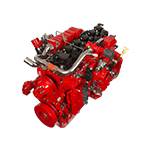8월 . 14, 2024 00:56 Back to list
Essential Tips for Safely Removing Brake Drums in Simple and Effective Steps
Tips for Brake Drum Removal
When it comes to vehicle maintenance, one of the essential tasks that owners may need to undertake is brake drum removal. Whether you are performing routine checks or replacing worn components, understanding how to properly remove brake drums is crucial for ensuring safety and performance. Here are some comprehensive tips to guide you through the process of brake drum removal.
1. Gather Necessary Tools and Equipment
Before diving into the removal process, ensure that you have all the required tools. You will typically need a wrench set, a drum brake tool, a rubber mallet, and possibly a brake cleaner. It's also wise to have safety glasses and gloves on hand to protect yourself during the procedure. Having a manual specific to your vehicle model can provide valuable insights and instructions tailored to your car.
2. Prepare the Vehicle
Start by parking your vehicle on a flat, stable surface. Engage the parking brake to prevent any movement, and turn off the engine. If you're working on the rear brakes, you might need to remove the rear wheel first, so loosen the lug nuts slightly before lifting the vehicle with a jack. Make sure to place jack stands under the vehicle for added safety before fully removing the wheel.
3. Inspect the Brake Components
Once you have access to the brake drum, it's a good idea to inspect the surrounding components. Look for any signs of wear or damage on the brake shoes, springs, and other hardware. This not only helps you identify if other parts need replacement but also assists in reassembling everything correctly after cleaning or replacing the drum.
4. Remove the Brake Drum
brake drum removal tips

With everything prepared, locate the retaining screws or clips that hold the brake drum in place. Use the appropriate tool to remove these. If the drum appears stuck due to rust or debris buildup, gently tapping it with a rubber mallet can loosen it. Be careful not to strike too hard to avoid damage.
5. Clean and Inspect the Brake Drum
Once you have successfully removed the brake drum, this is an excellent opportunity to clean it. Use a brake cleaner to remove dust and debris, ensuring you do this in a well-ventilated area. Inspect the drum for any signs of wear, such as grooves or cracks. If the drum is excessively worn, it may need to be resurfaced or replaced.
6. Reassemble with Care
After you have cleaned the drum and inspected all components, it’s time to reassemble everything. If you replaced any parts, ensure that they are correctly installed according to your vehicle's manual. When replacing the drum, line it up correctly with the axle and secure it with screws or clips.
7. Conduct a Test Drive
Upon completing the reassembly, it’s crucial to perform a test drive to ensure everything is functioning correctly. Start slow, testing the brakes at various speeds. Listen for any unusual noises and pay attention to how the brakes respond. If you notice anything off, recheck your work to ensure all components are functioning and installed correctly.
Conclusion
Removing brake drums may seem like a daunting task, but with the right tools, careful preparation, and a methodical approach, it can be accomplished efficiently. Always prioritize safety and, if you are unsure about any steps, consult a professional mechanic. Proper brake maintenance not only ensures your vehicle's performance but also significantly contributes to your safety on the road.
-
High-Quality Brake Drum MAZ – Durable Drum Brake Drum & Brake Drum and Brake Shoe Solutions
NewsJul.05,2025
-
High-Quality Brake Drum Iveco - Durable Drum Brake Drum & Brake Shoe Solutions
NewsJul.05,2025
-
High-Quality Brake Drum MAZ – Durable Drum Brake Drum & Brake Drum and Brake Shoe Solutions
NewsJul.04,2025
-
Brake Drum Man - High-Quality Drum Brake Drums & Brake Shoes for Reliable Performance
NewsJun.24,2025
-
High-Quality Brake Drum Kamaz – Durable Drum Brake Drum & Brake Shoe Replacement
NewsJun.10,2025
-
High-Quality Brake Drum Liza for Drum Brake Systems - Superior Durability and Performance
NewsJun.10,2025
